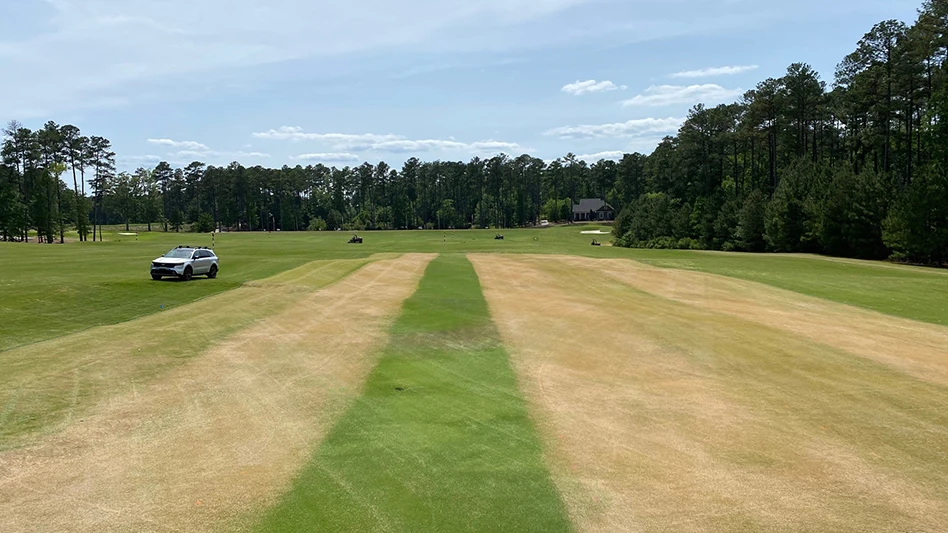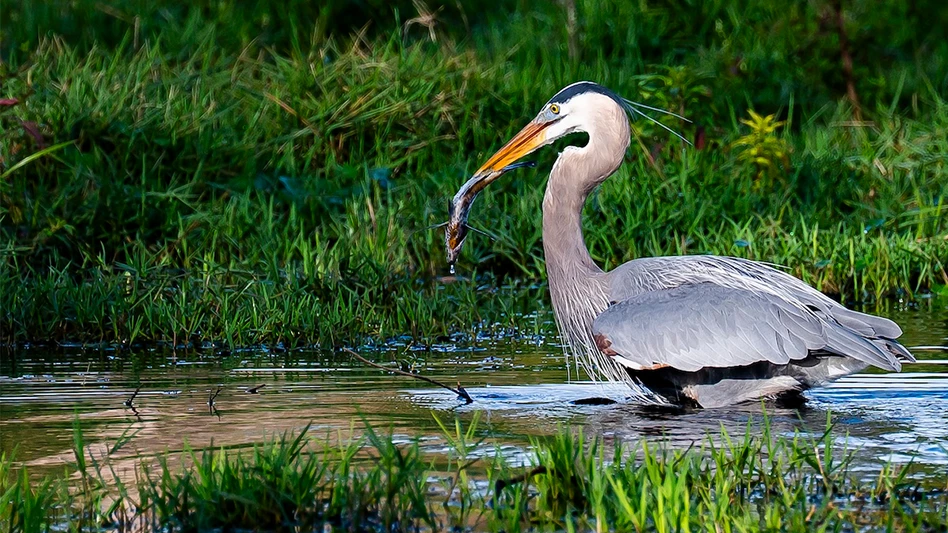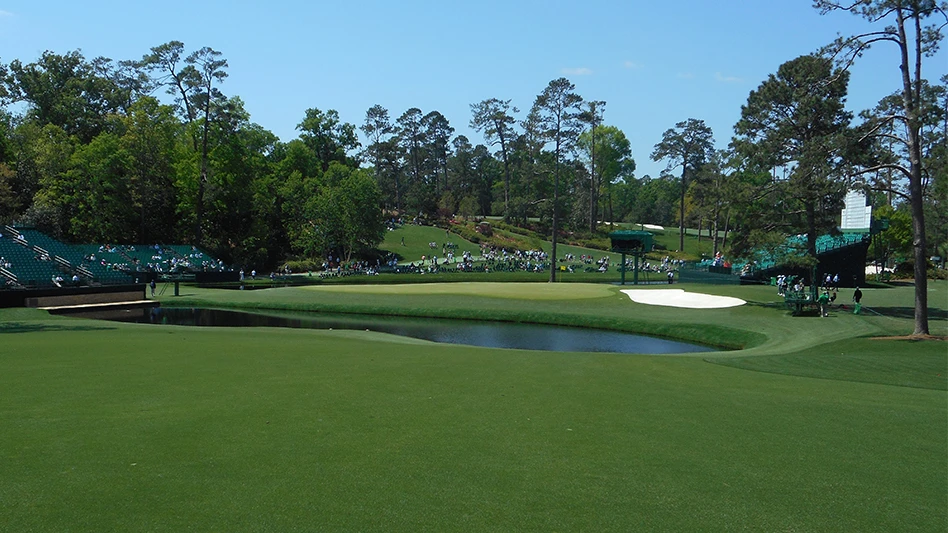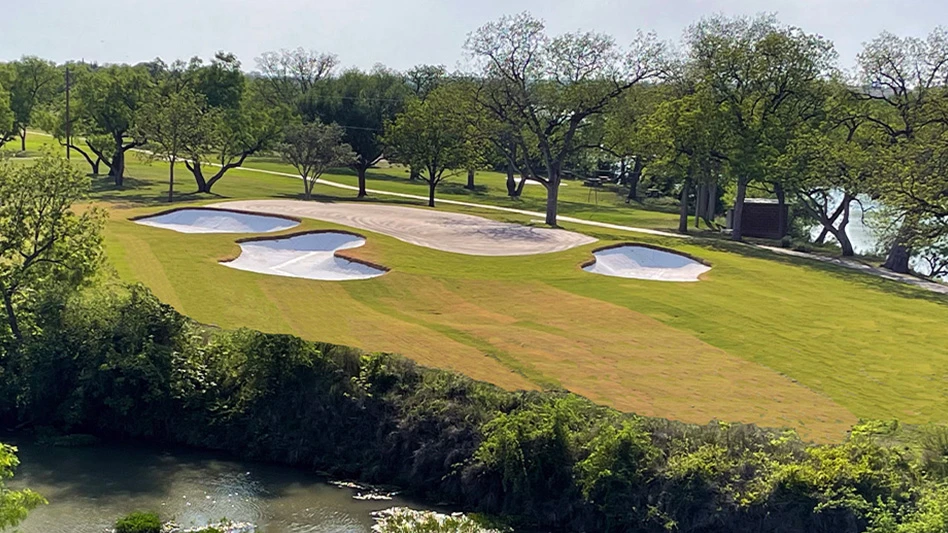

Not many superintendents receive opportunities to guide a pair of fairway grow-ins on the same course. Not many superintendents thoroughly understand the dynamics of the ground they maintain like Brian Powell.
Before anybody hit a golf shot at Old Chatham Golf Club, a peaceful private golf retreat inside North Carolina’s Research Triangle, Powell was hired to build, develop and lead a turf management team for a golf-driven membership. Old Chatham opened in 2001. In those days, providing great golf represented priorities A, B, C, D … you get the point. The club’s philosophies are the same today even if members now hit approach shots off a different turfgrass species.
Powell, a second-generation superintendent whose current title is director of golf course management, recently led a fairway turf conversion to zoysiagrass, a player-friendly species the club explored from the start. “When we built Old Chatham originally, we considered using zoysiagrass, because we felt like zoysiagrass gave us more winter, cold-weather hardiness, and we felt like zoysiagrass was a superior playing surface to hit a golf ball off,” Powell says.

The club selected Bermudagrass for its initial fairway turf species, because of potential water availability concerns while growing in the course, according to Powell. Plenty has changed in and around Old Chatham over the last two decades. Concerns surrounding a zoysiagrass grow-in are dissipating thanks to advances in plant genetics and breeding, significant performance data on golf courses, and the development of support products.
A window for a fairway conversion opened in 2022 when the club closed the course for architects Rees Jones and Greg Muirhead to return to Old Chatham to rework the 16th hole and rebuild bunkers. Powell was thoroughly prepared for the moment.
Extensive research over multiple decades on all things zoysiagrass, including products available to assist with a grow-in, led to Old Chatham sprigging its 25 acres of fairways with the species. Yes, Old Chatham converted from Bermudagrass to zoysiagrass via sprigging.
“The first thing they tell you in class at school is that you don’t sprig zoysia because it takes too long to grow in,” Powell says. “I went to a sod farm 20 years ago when we were trying to establish the initial grasses and zoysia was one of the things that we considered. It dawned on me, in a lightbulb moment, almost comically, ‘How do these guys establish the sod farms? Do they go buy sod and bring it in?’ Something has to happen.”
Here’s what happened at Old Chatham during the nastiest part of a North Carolina growing season: Powell guided a no-till conversion from Bermudagrass to zoysiagrass. Powell worked closely with an industry ally, Syngenta technical services manager Dr. Lane Tredway, on establishing BMPs for the no-till conversion. Their work led to Tredway and Syngenta using a one-acre plot at Old Chatham to test a tank mixture that can effectively keep Bermudagrass from entering sprigged zoysiagrass with excellent turf safety. This combination consisted of Recognition herbicide, which launched in late April 2023. with Fusilade II herbicide.
Their work led to Tredway and Syngenta using a one-acre plot at Old Chatham to test how a mixture of a new Syngenta herbicide, now called Recognition, with Fusilade II could safely and effectively keep Bermudagrass from entering sprigged zoysiagrass. Successful trial results of Recognition with Fusilade II under myriad conditions solidified the decision to convert fairways via sprigging.
“It’s an incredible combination,” Powell says. “For anybody that already has zoysia and is trying to get Bermuda out of it, it’s an absolute magic bullet. I have been in the business for over 30 years, and I don’t ever say that. It’s an amazing product and it’s also a fascinating product.”
Sprigging commenced in late May 2022 and lasted two weeks. Powell’s team sprayed all 25 acres of fairways, which were sprigged at a rate of 2,000 Georgia bushels per acre, with the Recognition + Fusilade II combination in July. Recognition features the proprietary safener metcamifen. In addition to the active ingredient in Recognition, metcamifen safens other herbicides, including Fusilade II.
“We knew we could use it in hot, nasty weather on immature sprigs,” Powell says. “The only reason we didn’t spray it even earlier is that we had several rain events that kept us from getting on top of it. Had we been able to get on it, I would have sprayed it when it was only a couple of weeks old.”
By late September, Old Chatham unveiled tidy zoysiagrass fairways to members. Converting via sprigging diminished the length of the course closure and significantly reduced the overall project cost.
“There was a common phrase going around after we reopened that playing on zoysia done this way is like cheating,” Powell says. “The golf ball just sits on top. We did so many other things and we did some great things, but the zoysia along with the changes to the 16th hole are what wowed everybody, because every fairway you get to hit off is so superior.”
Powell’s team applied Recognition with Fusilade II just once during last year’s grow-in. He’s planning another fairway-wide application this summer.
“Part of what gave us confidence that we would have a good result was the fact that we had Recognition in our back pocket,” he says. “We made up our minds that we were going to put zoysia in. But when we saw what Recognition could do, it upped our confidence level and increased the quality of our product in the very first year and long term our fairways are going to be Bermudagrass-free because of how this product works.”

The perfect time to go all in
A little farther South and a little later last summer, Scott Lambert also tested out Recognition + Fusilade II.
After almost a decade as an assistant superintendent at nearby Peachtree Golf Club, Lambert is now in his sixth year leading the turf team at Atlanta Country Club — and his fourth month of a nearly yearlong course renovation with architect Beau Welling that includes greens, bunkers, an irrigation overhaul, a hydronics system beneath the greens, regrassing almost the entire property, reshaping fairways and other areas to improve drainage, adding plenty of French drainage … “Big scope,” Lambert says. “I’ve got my hands full.”
Other than working through a rather comprehensive renovation, Lambert says one of his more consistent challenges — first at Peachtree Golf Club and now at Atlanta Country Club — has been managing Bermudagrass contamination in zoysiagrass. “That weighed on me when we decided to regrass the fairways at Atlanta Country Club in zoysia,” he says. “I was really concerned about how we were going to get rid of the existing Bermuda, because you’re not going to kill all of it. How do I keep from getting in a scenario where I’m just battling Bermuda in the fairways? Zoysia’s a great surface but at what expense is the tradeoff not there?”
Like Powell, Lambert considers zoysiagrass to be friendly for golfers. He also considers it essential to the course because of the layout, a lack of sunlight and increased play.
“We deal with a lot shade here at Atlanta Country Club, a lot of very mature trees, and our golf holes sort of sit down in a valley, with houses flanking them on both sides,” he says. “Zoysia’s going to perform better with the more limited sunlight it’s going to get. And the winter playability of a healthy zoysia surface is far superior to any dormant Bermuda surface that I’ve seen. We’ve become such a year-round golf course and the wintertime was always a little bit of a blemish. The fairways just weren’t that great because the Bermuda was dormant and thin.”
Enter Recognition + Fusilade II. Last summer, with the renovation fast approaching, Lambert picked out one zoysiagrass tee contaminated with Bermudagrass and sprayed one application. “After a week or two,” he says, “you could really see the results.” His previous herbicide tank mix normally injured the zoysiagrass at least a little, but with this combo, the zoysiagrass remained in perfect shape.
“We always had a hard time spraying it the old way, because it did injure the zoysia,” he says. “We were spraying during the summertime and the zoysia could already be stressed out by drought or something else, and you didn’t really want to injure it with an herbicide also. Just having this ability with Recognition to not injure the zoysia at all, you’re just going to have a better chance to stay on a program with the Recognition versus what we used to do.”

Lambert realized that the renovation marked the perfect time to go all in on zoysia. Thanks to so much new sod arriving this year, he will be able to treat it from its first days on the property and will be able to thwart Bermudagrass from spreading. The course will still feature Bermudagrass approaches and rough when it reopens in December, with zoysiagrass tees and fairways.
“I’m going to be prepared to start spraying it this summer after we start sodding,” Lambert says. “If I start seeing it, if I feel like I have any contamination or encroachment anywhere, we’ll be prepared.”
A decade of research

More than a decade before Powell or Lambert first worked with Recognition, Dr. Jim Brosnan started to dive into lab research surrounding metcamifen, the aforementioned safener that forms the chemistry within the herbicide.
“Our lab started working with it in probably 2012,” says Brosnan, a professor in the Plant Sciences Department at the University of Tennessee and the director of the school’s Weed Diagnostics Center. “Syngenta reached out and we started to put metcamifen with a number of different AIs. It was a very broad-spectrum look at where the safener might allow an AI that currently was not safe or labeled for use in a given turf situation to solve a problem in that turf situation.”

While studying St. Augustinegrass tolerance, Brosnan and others at UT tested metcamifen with trifloxysulfuron, which wasn’t then labeled for use on St. Augustinegrass. “We saw that this safener made the tolerance acceptable,” Brosnan says. “We then completed several additional projects to try to understand, OK, if the safener allows us to use Monument (herbicide) in St. Augustinegrass, does Monument still do what we want it to do from a weed control perspective? And if we took Monument plus safener and put it in Bermudagrass, is it still going to do all the things that Monument is expected to do?”
Hundreds of plots and many trials later, Syngenta returned to Knoxville in 2020 to look at the safener again and sift through data with fluazifop. “Could we continue to explore that combination for Bermuda suppression in zoysia?” Brosnan says. “What if we were to add Monument plus safener to a Fusilade II treatment? What would that look like? And that got us to where we are now.”
Brosnan is quick to say that he is far from figuring out every last nuance of the new product. There are factors specific to courses and regions that cannot be addressed in research trials — drainage, traffic, shade, on and on — but he says the best superintendents are “smart enough and savvy enough to know how to fit a technology that’s been vetted through years of research into their system in a way that works for them.”
And seeing how turf pros have already benefited from trials with Recognition will give Brosnan one thrill after another.
“One of the most rewarding parts of my job is to be able to work with new tech, years before launch, to play a role in the development process, and then be able to work with superintendents and help them use that technology to solve problems on their golf course,” he says. “That’s super rewarding for anybody who does applied field research.”


Explore the May 2023 Issue
Check out more from this issue and find your next story to read.
Latest from Golf Course Industry
- PBI-Gordon promotes Jeff Marvin
- USGA investing $1 million into Western Pennsylvania public golf
- KemperSports taps new strategy EVP
- Audubon International marks Earth Day in growth mode
- Editor’s notebook: Do your part
- Greens with Envy 66: A Southern spring road trip
- GCSAA’s Rounds 4 Research auction begins
- Quali-Pro hires new technical services manager





